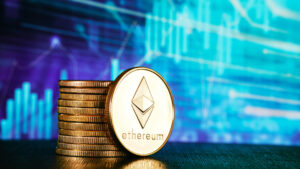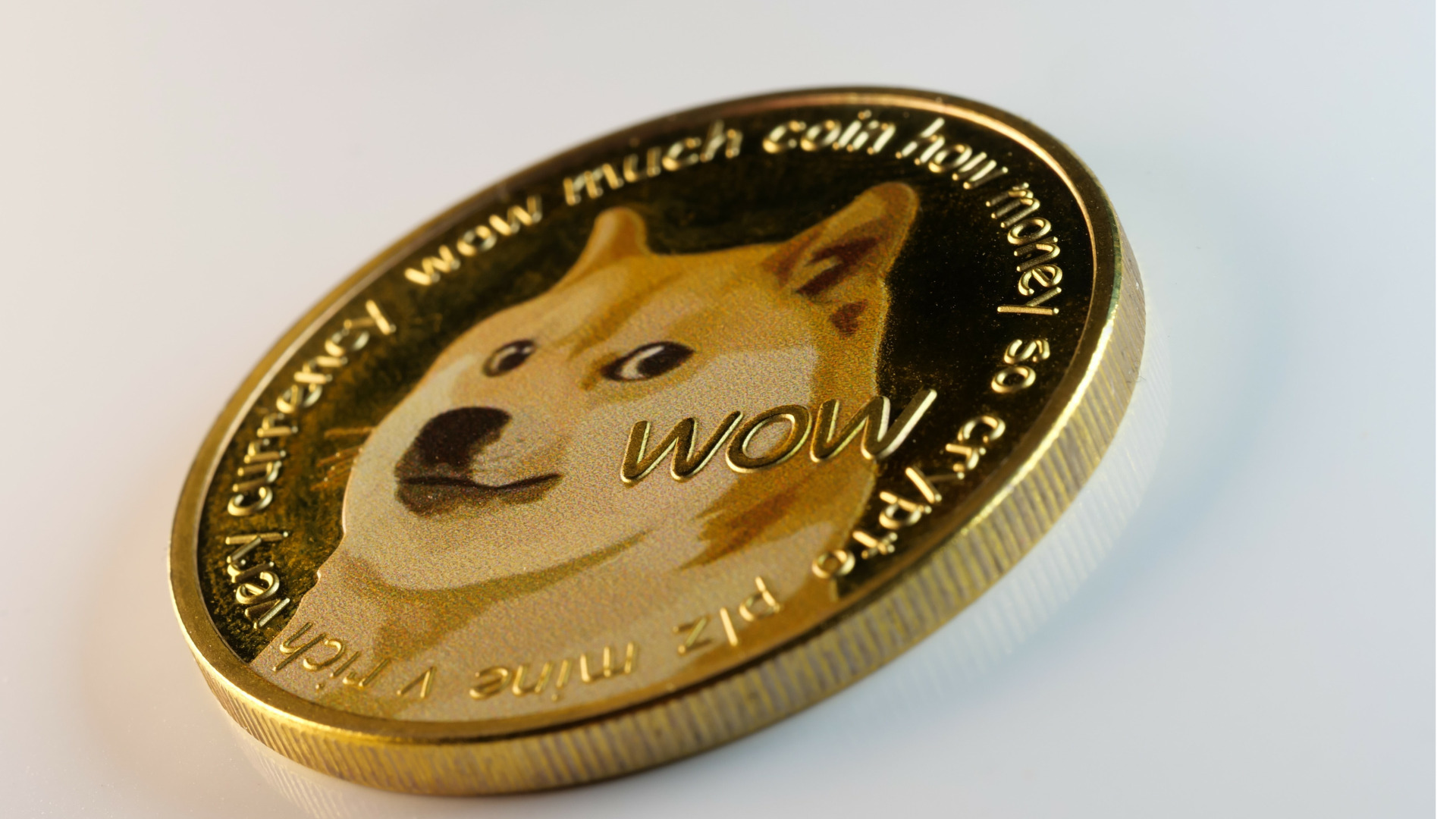Introduction: Understanding the Altcoin Landscape
The cryptocurrency market, since the inception of Bitcoin in 2009, has witnessed a significant proliferation of alternative digital currencies, collectively known as altcoins 1. The term “altcoin” itself is a blend of “alternative” and “coin,” essentially encompassing all cryptocurrencies other than Bitcoin 2. While Bitcoin remains the dominant cryptocurrency, thousands of altcoins have emerged, each with its own unique characteristics, purposes, and underlying blockchain technology 1. These alternative coins often aim to improve upon Bitcoin’s features, address specific use cases, or even introduce entirely novel concepts to the digital asset space 1. The sheer volume of these alternative currencies, exceeding 5,000 at present and surpassing 25,000 by June 2023, underscores the dynamic and rapidly expanding nature of this market 3. This vast landscape of altcoins signifies a continuous drive for innovation, with developers constantly exploring new ways to leverage blockchain technology 1.
Among the myriad of altcoins, Dogecoin stands out as a particularly prominent and unique example 6. Unlike many cryptocurrencies that were conceived with specific technological or functional advantages in mind, Dogecoin originated as a lighthearted joke in December 2013 7. Its creation, inspired by the popular “Doge” internet meme featuring a Shiba Inu dog, was intended to satirize the often-frenzied speculation surrounding cryptocurrencies at the time 8. Despite its whimsical beginnings, Dogecoin has garnered a massive and dedicated online community, achieving significant market capitalization and even finding practical applications in areas like online tipping and charitable fundraising 7. The improbable journey of Dogecoin from a mere internet joke to a multi-billion dollar asset makes it an intriguing and illustrative case study for understanding the broader altcoin phenomenon, particularly the powerful role of community and online sentiment in the cryptocurrency market.

The Rise of Altcoins: A Historical Perspective
The emergence of altcoins began in 2011, approximately two years after Bitcoin’s groundbreaking launch 1. These early entrants into the cryptocurrency arena were often motivated by a desire to enhance or expand upon the functionalities offered by Bitcoin 4. The first altcoins aimed to improve aspects such as transaction speed, energy efficiency, or even introduce entirely new features 4. Namecoin, launched in April 2011, holds the distinction of being the first notable altcoin 1. It was created as a “fork,” or offshoot, of the Bitcoin blockchain with the specific purpose of allowing users to register their own domain names, showcasing an early attempt to utilize blockchain technology for applications beyond just currency 1. Following Namecoin, Litecoin emerged in October 2011, introducing scrypt as its hashing algorithm instead of Bitcoin’s SHA-256. This technical difference aimed to facilitate faster block processing times compared to Bitcoin 6. Another significant early altcoin was Peercoin, created in August 2012, which pioneered the concept of “staking,” also known as proof-of-stake, as an alternative or supplement to Bitcoin’s energy-intensive proof-of-work mining process 4. This initial wave of altcoins clearly demonstrates a trend of iterative innovation, where developers sought to build upon Bitcoin’s foundation by addressing perceived limitations or exploring new possibilities within the realm of decentralized digital currencies.
The motivations behind the creation of these early altcoins were diverse. Some aimed to add specific features or rectify perceived shortcomings in the existing Bitcoin blockchain 1. Others were built on entirely new blockchains with different underlying architectures and methods for validating transactions 1. Beyond simply serving as a currency, many altcoins were designed to play a role in their respective blockchain ecosystems, potentially influencing network governance or funding ongoing operations 1. As the altcoin market matured, various types of altcoins began to emerge, each with a distinct purpose. Mining-based coins, like Litecoin, utilized a process called mining to verify transactions and introduce new coins into circulation 4. Staking-based coins, such as Peercoin, rewarded users for holding and “staking” their coins to help validate transactions, often offering a more energy-efficient approach 4. Stablecoins were developed to minimize the price volatility often associated with cryptocurrencies by pegging their value to a more stable asset like a fiat currency or commodity 1. Payment tokens, like Litecoin and Bitcoin Cash, were created to facilitate faster and cheaper transactions compared to Bitcoin 1. Governance tokens empowered holders with voting rights on proposals affecting decentralized autonomous organizations (DAOs) 1. Even newer concepts like play-to-earn tokens emerged within blockchain-based games, rewarding users for their participation 1. This diversification into various categories highlights the increasing specialization within the cryptocurrency market, as developers explored the potential of blockchain technology for a growing range of applications beyond simple peer-to-peer payments.
Table 1: Notable Early Altcoins
| Altcoin Name | Year of Launch | Key Innovation/Purpose | Relationship to Bitcoin |
| Namecoin | 2011 | Decentralized Domain Names | Bitcoin Fork |
| Litecoin | 2011 | Faster Block Times | Scrypt Hash Function |
| Peercoin | 2012 | Introduction of Proof-of-Stake | Hybrid PoW/PoS |
The initial phase of altcoin development was characterized by a strong focus on technical improvements and the exploration of novel functionalities for digital currencies and blockchain technology. This period laid the groundwork for the diverse and complex altcoin market that exists today.
Dogecoin: The Meme That Became a Movement
Genesis of the Doge
Dogecoin’s story began in December 2013 with its creation by software engineers Billy Markus, then at IBM, and Jackson Palmer, a product manager at Adobe 7. The cryptocurrency was intentionally conceived as a joke, a lighthearted response to the intense hype and often-absurd speculation that characterized the burgeoning cryptocurrency market 8. Its inspiration came from the wildly popular “Doge” internet meme, which featured a cartoon image of a Shiba Inu dog accompanied by grammatically incorrect, often humorous text in Comic Sans font expressing the dog’s inner thoughts 6. Technically, Dogecoin was created as a fork of Litecoin, which itself was derived from Bitcoin’s codebase 7. As a result, Dogecoin utilizes the Scrypt algorithm, the same proof-of-work algorithm employed by Litecoin 7. Dogecoin officially launched on December 6, 2013, quickly gaining traction within online communities 8. The very nature of Dogecoin’s creation as a deliberate parody underscores the sometimes-unconventional and community-driven dynamics that can influence the cryptocurrency landscape, where even projects born from a joke can unexpectedly capture public attention and achieve significant market presence.
Evolution and Key Milestones
Shortly after its launch, Dogecoin experienced a rapid surge in price and popularity 7. Its early use cases were primarily centered around online tipping, where users would send small amounts of Dogecoin to each other as a form of appreciation for content on platforms like Reddit and Twitter 9. The cryptocurrency also became known for its use in charitable fundraising initiatives. A notable example from early 2014 was the Dogecoin community’s successful effort to raise over $50,000 to help send the Jamaican Bobsled Team to the Winter Olympics after they qualified but lacked the necessary funding 10. Despite its growing popularity, Dogecoin faced challenges early on, including a significant theft of millions of coins from the online wallet platform Dogewallet in December 2013 8. However, even this negative event spurred the Dogecoin community to action, with the “SaveDogemas” initiative successfully raising enough donations to reimburse the affected users, demonstrating the strong sense of community within the Dogecoin ecosystem 8. Over the years, Dogecoin has experienced several significant price surges, often coinciding with broader cryptocurrency bull markets. During the 2017 to early 2018 cryptocurrency bubble, Dogecoin briefly reached a peak of $0.017, bringing its total market capitalization close to $2 billion 8. The period between 2020 and 2021 saw even more dramatic price increases, fueled by social media buzz, including a TikTok trend aimed at pushing Dogecoin’s price to $1 7. Notably, endorsements from prominent figures like Elon Musk have also had a substantial impact on Dogecoin’s price, with his tweets often leading to significant rallies 9. A particularly unique milestone was the announcement in May 2021 by SpaceX of a rideshare mission to the Moon, fully funded by Dogecoin, marking the first space mission financed by a cryptocurrency 8. This series of events highlights how Dogecoin’s evolution has been profoundly shaped by its vibrant online community and the power of social media trends, demonstrating the significant influence of collective sentiment on cryptocurrency valuations, even for projects that began as a joke.
Table 2: Key Milestones in Dogecoin’s History
| Year | Event/Milestone | Impact/Significance |
| Dec 2013 | Creation as a joke | Highlighted meme origins and satirical intent |
| Jan 2014 | Jamaican Bobsled Team fundraiser | Demonstrated early community spirit and charitable use case |
| 2017-2018 | Significant price surge during crypto bull run | Showcased potential for substantial market growth |
| 2020-2021 | TikTok trend and Elon Musk endorsements | Further demonstrated social media influence on price |
| May 2021 | SpaceX DOGE-1 mission announcement | First cryptocurrency-funded space mission, highlighting unique adoption potential |
Current Status and Use Cases
Currently, Dogecoin is classified as both an altcoin and a meme coin, acknowledging its origins and its continued reliance on internet culture 7. It remains in use for online transactions, particularly for tipping content creators across various social media platforms 7. The cryptocurrency boasts a strong and loyal online community, often referred to as the “Doge Army,” which actively promotes and supports the project 7. One of Dogecoin’s distinguishing features is its unlimited supply of coins, meaning there is no cap on the total number of DOGE that can be mined 7. Approximately 10,000 new Dogecoins are introduced into circulation every minute 12. This inflationary model contrasts with the deflationary nature of Bitcoin, which has a fixed supply limit. While Dogecoin initially lacked significant technical updates after 2015, there has been a renewed interest in its development in recent years 9. The Dogecoin Foundation, originally established in 2014, was relaunched in 2021 with the aim of supporting the Dogecoin ecosystem through development and advocacy 12. Despite its meme-driven beginnings, Dogecoin has solidified its position as a significant cryptocurrency with a substantial market capitalization and a dedicated user base. Its primary utility, while not as technologically sophisticated as some other altcoins, lies in its strong community and its role as a cultural phenomenon within the cryptocurrency space, serving as a fun and approachable entry point for many into the world of digital assets.
Factors Influencing the Growth and Adoption of Altcoins
Several key factors contribute to the growth and adoption of altcoins in the cryptocurrency market. Technological innovation plays a crucial role, as altcoins often emerge to address limitations or explore use cases that Bitcoin did not initially envision 1. They frequently introduce innovations in areas such as transaction speed, security protocols, and scalability solutions 1. For instance, Litecoin aimed for faster transaction confirmations, while Ethereum introduced the groundbreaking concept of smart contract functionality 6. Furthermore, the development of energy-efficient consensus mechanisms like staking, pioneered by early altcoins like Peercoin, offers a more sustainable alternative to the energy-intensive mining process used by Bitcoin 4. These technological advancements and the ability of altcoins to offer improvements or cater to specific needs are significant drivers for their adoption.
Community support is another vital factor, particularly evident in the case of meme coins like Dogecoin, where a strong and enthusiastic online community, such as the “Doge Army,” can significantly influence market sentiment and adoption 7. Community-driven initiatives, like Dogecoin’s charitable campaigns, can raise awareness and foster a sense of collective purpose around a project 8. For certain altcoins, this social aspect and the network effects it creates are paramount to their success, often outweighing purely technological advantages.
Market trends and overall sentiment also exert a considerable influence on the growth of altcoins. Periods known as “altcoin seasons” occur when capital flows from Bitcoin into altcoins, leading to significant price appreciation across the altcoin market 19. This phenomenon often coincides with a decrease in Bitcoin’s market dominance 19. Hype, increasing adoption rates, and heightened network activity can further fuel these trends 19. The impact of social media buzz and endorsements from influential figures, as seen with Dogecoin, can also lead to substantial price movements and increased visibility for altcoins 7. Investor speculation, particularly surrounding meme coins and other high-potential, high-risk assets, also plays a significant role in the altcoin market 5.
The utility and real-world use cases of an altcoin are critical for its long-term sustainability and adoption 5. Altcoins that offer clear utility beyond simply being a store of value or a medium of exchange are more likely to achieve lasting success. Examples include payment tokens designed for efficient transactions, governance tokens that grant holders a say in the direction of a project, and utility tokens that provide access to specific platforms or services 1. While community support and market hype can drive short-term growth, a strong underlying utility provides a more fundamental value proposition that can lead to sustained adoption.
Finally, while not explicitly detailed in the provided snippets, the regulatory landscape surrounding cryptocurrencies and altcoins can significantly impact their growth and adoption. Clarity and supportive frameworks from regulatory bodies can foster innovation and increase institutional adoption, while uncertainty or restrictive regulations can hinder development and limit market access.
Table 3: Factors Influencing Altcoin Growth
| Factor | Description | Example (if applicable) |
| Technological Innovation | Improvements in speed, security, scalability, and introduction of new functionalities. | Ethereum’s smart contracts |
| Community Support | Strong online communities that promote and support the project. | Dogecoin’s “Doge Army” |
| Market Trends and Sentiment | Capital flow from Bitcoin to altcoins during “altcoin seasons,” social media hype, and endorsements. | Dogecoin’s price surges due to Elon Musk’s tweets |
| Utility and Use Cases | Practical applications of the altcoin beyond just currency, such as payments, governance, or platform access. | Payment tokens like Litecoin |
| Regulatory Landscape | Government regulations and policies affecting the cryptocurrency market. | (Not explicitly in snippets, but a known influencing factor) |
The Future of Altcoins: Expert Insights and Analyses
Experts anticipate that altcoins will continue to be a driving force of innovation within the cryptocurrency space 1. They are expected to push the boundaries of blockchain technology, exploring applications far beyond Bitcoin’s original design 1. The trend of altcoins catering to very specific and narrowly defined use cases is also likely to persist, leading to a more specialized and potentially fragmented cryptocurrency market 20.
However, experts also caution that the altcoin market is inherently volatile and carries significant investment risk 4. Investing in altcoins generally presents a higher potential for both rewards and losses compared to Bitcoin 4. The future trajectory of any individual altcoin is difficult to predict with certainty 5. The altcoin market is highly competitive, with thousands of projects vying for attention and adoption 3. Many altcoins that gained popularity in the early days have since faded into obscurity, highlighting the dynamic and often unforgiving nature of this market 20.
Despite these risks, the fundamental premise behind many altcoins remains compelling. They often aim to improve upon the perceived limitations of Bitcoin, offering potentially superior transaction speeds, lower costs, or enhanced functionalities 5. Experts believe that this drive for improvement and innovation will continue to fuel the development and adoption of select altcoins, potentially leading some to even surpass Bitcoin in specific aspects of performance or utility.
Looking Ahead: The Future Prospects of Dogecoin
Dogecoin’s future is likely to remain closely tied to the strength and enthusiasm of its active online community 7. Sustained community engagement will be crucial for maintaining its relevance and market value. The influence of social media trends and endorsements from prominent figures will also likely continue to play a significant role in Dogecoin’s price movements and overall visibility 7. This reliance on social sentiment makes its future somewhat unpredictable and dependent on viral trends and public perception.
For Dogecoin to achieve long-term sustainability beyond its meme status, increasing its real-world utility will be essential 10. Continued development efforts and wider adoption by online retailers as a legitimate payment method could significantly enhance its utility. However, investors and users should anticipate continued volatility in Dogecoin’s price due to its speculative nature and the absence of a supply cap 6. This makes Dogecoin a high-risk, high-reward asset.
The future could also be significantly impacted by technological advancements within the Dogecoin ecosystem. While historically seeing limited development, the relaunch of the Dogecoin Foundation suggests a renewed focus on technical improvements 9. Future upgrades or integrations could enhance Dogecoin’s capabilities and potentially broaden its adoption.
Technological and Community Impact on the Future
The future of both Dogecoin and altcoins in general will be significantly shaped by ongoing technological advancements within the broader cryptocurrency ecosystem. Improvements in blockchain technology, such as faster transaction speeds, reduced fees, and enhanced scalability, will benefit altcoins by making them more practical and user-friendly 1. The continued development of smart contract platforms and decentralized applications (dApps) will create new and diverse use cases for altcoins, expanding their potential applications beyond simple currency functions 6. The emergence of novel consensus mechanisms could offer more efficient and secure alternatives to traditional proof-of-work systems, potentially leading to more environmentally sustainable altcoins 4. Overall, technological progress will empower altcoins to become more versatile, efficient, and widely adopted.
Community developments will also remain a critical factor in the success of altcoins. Strong and active communities can drive adoption by fostering awareness, encouraging usage, and even contributing to the development of specific altcoins 7. Community-led initiatives, such as fundraising efforts and awareness campaigns, can significantly influence an altcoin’s trajectory, as clearly demonstrated by Dogecoin’s history 8. For meme-based coins like Dogecoin, the strength and engagement of the community are particularly vital for maintaining their relevance and driving their value.
Ultimately, the future success of Dogecoin and the broader altcoin market will likely depend on a synergistic relationship between technological advancements and vibrant, engaged communities. Technological improvements can attract more users and developers, leading to a positive cycle of growth and innovation. Conversely, strong communities can advocate for and drive the adoption of new technologies within their chosen altcoin ecosystems. This interplay between technological progress and community support will be crucial in shaping the future landscape of alternative cryptocurrencies.
Conclusion: The Enduring Legacy of Altcoins and the Dogecoin Phenomenon
In conclusion, altcoins originated as alternatives to Bitcoin, driven by a spirit of innovation and a desire to address a wide range of needs within the burgeoning digital currency space. From early attempts to improve transaction speeds and introduce new consensus mechanisms to the development of specialized tokens for various applications, altcoins have continuously expanded the possibilities of blockchain technology.
Dogecoin’s journey from a lighthearted internet meme to a significant cryptocurrency with a dedicated community and notable cultural relevance exemplifies the unique and often unpredictable nature of the altcoin market. Its story underscores the powerful influence of community support and social media trends in shaping the value and adoption of digital assets.
The growth and adoption of altcoins are influenced by a complex interplay of factors, including technological innovation, community engagement, market sentiment, and the utility they offer. While the future of any individual altcoin remains uncertain, the altcoin market as a whole is expected to continue its dynamic evolution, driven by ongoing technological advancements and the passionate communities that support these digital currencies. Dogecoin, despite its unconventional origins, serves as a compelling example of the potential for altcoins to capture the public imagination and carve out a unique space within the ever-evolving world of cryptocurrency.
引用文献
- What Are Altcoins? | Built In, 3月 27, 2025にアクセス、 https://builtin.com/articles/what-is-altcoin
- bitflyer.com, 3月 27, 2025にアクセス、 https://bitflyer.com/en-eu/faq/55-7#:~:text=An%20Altcoin%20is%20an%20alternative,the%20cryptocurrencies%20other%20than%20Bitcoin.
- What is an Altcoin? | Bitcoin (BTC) Exchange| bitFlyer Europe, 3月 27, 2025にアクセス、 https://bitflyer.com/en-eu/faq/55-7
- What Are Altcoins? Defined and Explained | The Motley Fool, 3月 27, 2025にアクセス、 https://www.fool.com/terms/a/altcoin/
- Altcoin Explained: Pros and Cons, Types, and Future – Investopedia, 3月 27, 2025にアクセス、 https://www.investopedia.com/terms/a/altcoin.asp
- Cryptocurrency – Wikipedia, 3月 27, 2025にアクセス、 https://en.wikipedia.org/wiki/Cryptocurrency
- Dogecoin (DOGE) in Crypto: What It Is, History, Uses | The Motley Fool, 3月 27, 2025にアクセス、 https://www.fool.com/terms/d/dogecoin/
- Dogecoin – Wikipedia, 3月 27, 2025にアクセス、 https://en.wikipedia.org/wiki/Dogecoin
- Dogecoin (DOGE): A Fun and Friendly Cryptocurrency | Gemini, 3月 27, 2025にアクセス、 https://www.gemini.com/cryptopedia/dogecoin-history
- Dogecoin – Definition, History, Live Chart, 3月 27, 2025にアクセス、 https://corporatefinanceinstitute.com/resources/cryptocurrency/dogecoin/
- Cryptocurrency Dogecoin (DOGE): What It Is, History, and Uses – Investopedia, 3月 27, 2025にアクセス、 https://www.investopedia.com/terms/d/dogecoin.asp
- Dogecoin Price, DOGE Price, Live Charts, and Marketcap – Coinbase, 3月 27, 2025にアクセス、 https://www.coinbase.com/price/dogecoin
- What is Dogecoin? – Coinbase, 3月 27, 2025にアクセス、 https://www.coinbase.com/learn/crypto-basics/what-is-dogecoin
- What Are Altcoins | Angel One, 3月 27, 2025にアクセス、 https://www.angelone.in/knowledge-center/cryptocurrency/what-are-altcoins
- Dogecoin – Simple English Wikipedia, the free encyclopedia, 3月 27, 2025にアクセス、 https://simple.wikipedia.org/wiki/Dogecoin
- Dogecoin | EBSCO Research Starters, 3月 27, 2025にアクセス、 https://www.ebsco.com/research-starters/business-and-management/dogecoin
- Dogecoin: The Most Honest Sh*tcoin | Galaxy, 3月 27, 2025にアクセス、 https://www.galaxy.com/insights/research/dogecoin-shitcoin-honest/
- What is Dogecoin – Northcrypto, 3月 27, 2025にアクセス、 https://www.northcrypto.com/learn/about/dogecoin
- What is Altcoin Season? When is Altseason in March 2025? | Tangem Blog, 3月 27, 2025にアクセス、 https://tangem.com/en/blog/post/what-is-altseason/
- What are altcoins? — Bitpanda Academy, 3月 27, 2025にアクセス、 https://www.bitpanda.com/academy/en/lessons/what-are-altcoins











